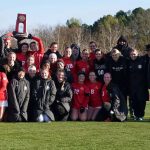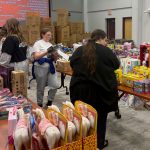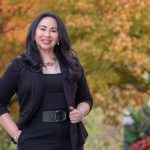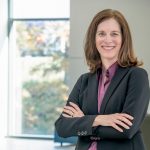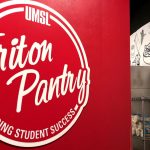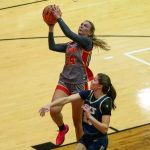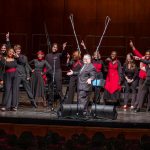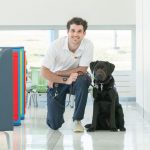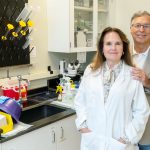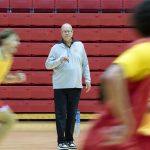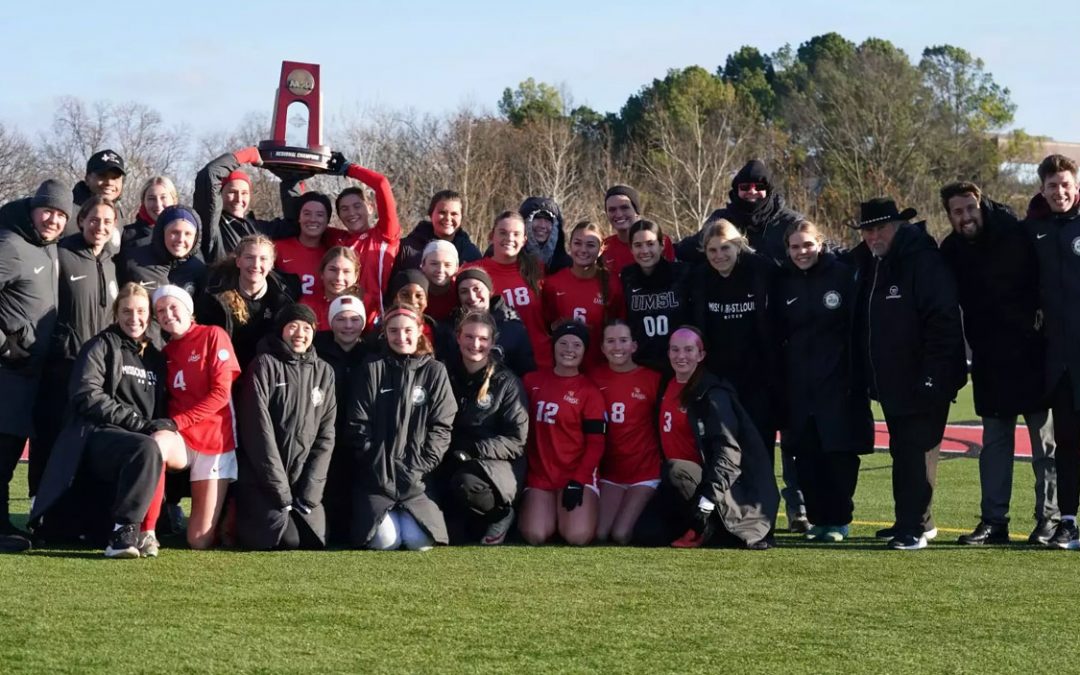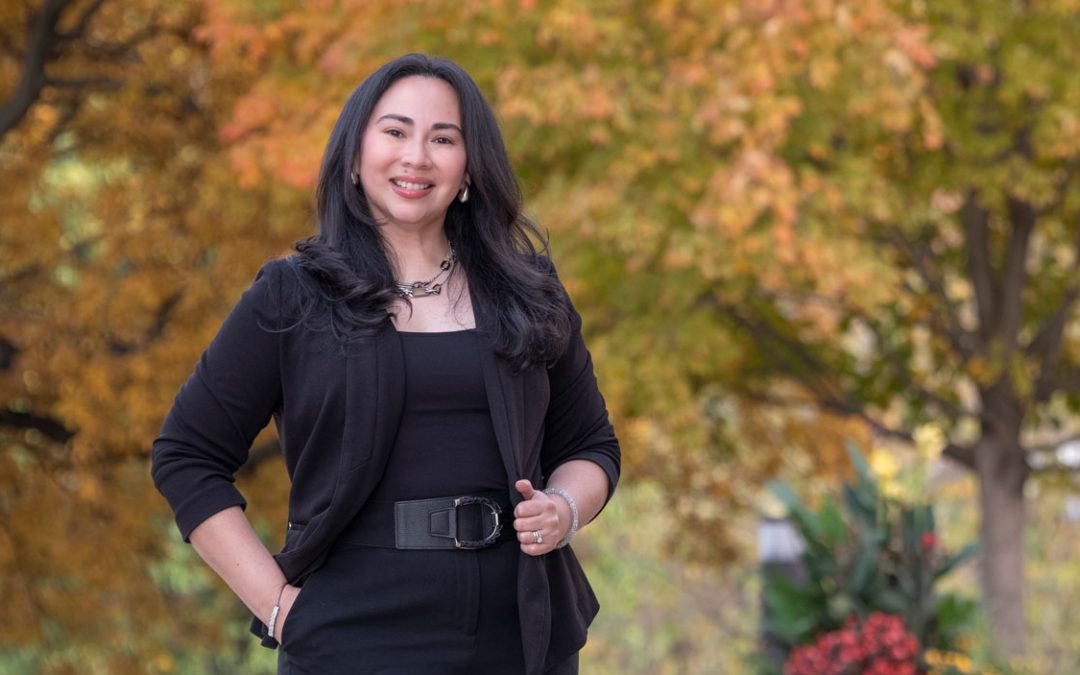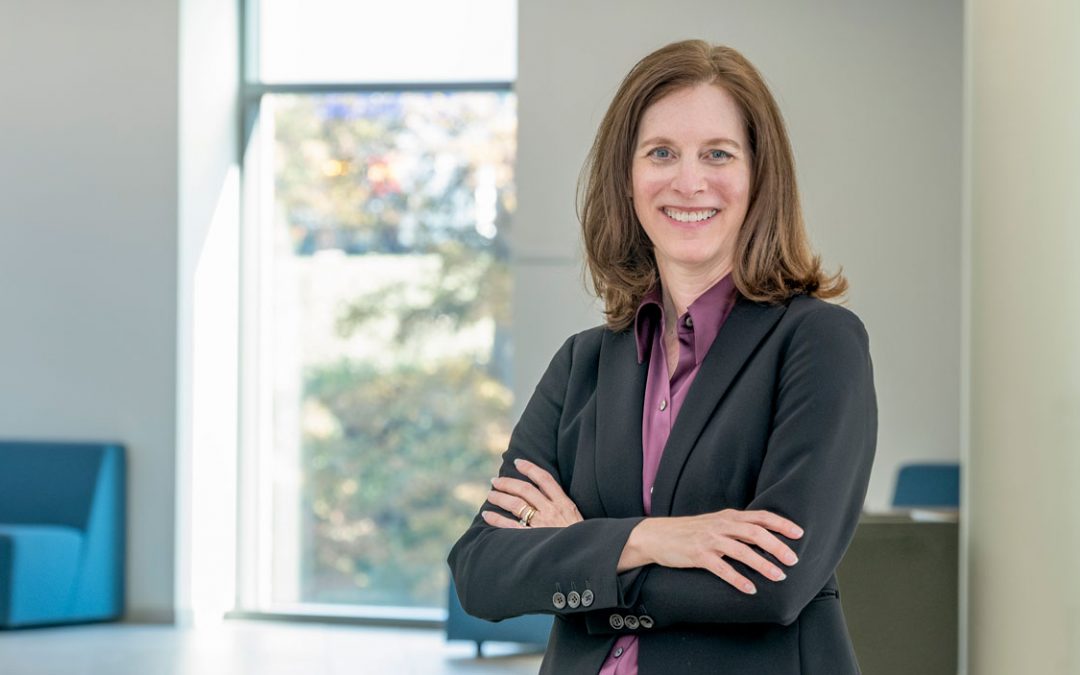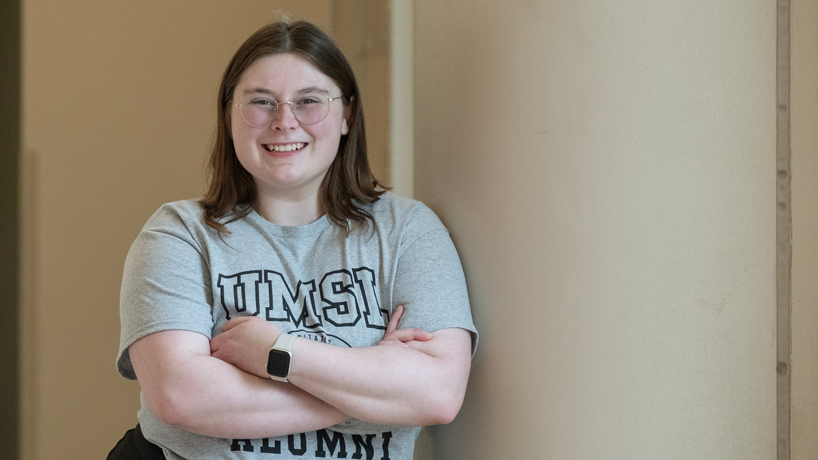
Emily Sigmund graduated cum laude with a bachelor’s degree in physics and a certificate from the Pierre Laclede Honors College, and she’ll be pursuing a PhD in medical physics from Washington University in St. Louis. (Photo by Derik Holtmann)
As a child, Emily Sigmund spent many nights watching TV programs about space and science on the Discovery Channel with her father. One phenomenon in particular piqued her interest: black holes.
When it came time to write her first research paper, Sigmund knew what topic she wanted to explore.
“Actually, I was really, really scared of black holes, and that’s why I decided to write a paper about them,” she said. “I was like, ‘I’ll find out as much as I can about this thing, and then I won’t be scared of it anymore.’ I think it had to be five pages double-spaced, because I was in sixth grade, but I ended up writing like 15 pages. It became this huge research project.”
That research project was the first of many for Sigmund and crystallized her interest in physics, setting her on a path toward a career in STEM.
This month, Sigmund graduated cum laude from the College of Arts and Sciences and Pierre Laclede Honors College at the University of Missouri–St. Louis with a bachelor’s degree in physics. During her time at UMSL, she earned Chancellor’s and Honors College Merit Scholarships, assisted Associate Professor Erika Gibb with comet spectroscopy research, interned at the National Geospatial-Intelligence Agency and participated in the Purdy Summer Research Fellowship at Washington University in St. Louis. Sigmund is now pursuing a PhD in the medical physics program at WUSTL with the intention to contribute to medical research and help cancer patients during treatment in the future.
“I think that I’m at a point in my life where things are probably the best they’ve ever been,” she said, reflecting on graduating. “I’m going to get a PhD at an amazing school, and they’re paying for it. I’m getting married. Everything has been lining up, so this is like the cherry on top.”
Aside from an early interest in space, Sigmund was always drawn to the elemental nature of science. She appreciated that the everyday things surrounding her could be explained by math and physics.
“When you understand the fundamentals of, say, calculus, you start to look at things differently,” Sigmund said. “When I started actually getting into physics classes, being able to take what I was learning in my classes and see it in the real world, that was just so cool to see.”
She began studying physics at the University of Denver, having cobbled together enough scholarships for one year of tuition at the private institution. But, as sophomore year approached, she realized the numbers weren’t adding up.
“I thought I would just figure it out because I was 18,” Sigmund said. “I was like, ‘I’ll be fine.’ And I wasn’t fine. It was one of the hardest moments I’ve had because I was there for a year, and I really loved it there. I had all these friends, and loved the program.
“It was just getting closer and closer to this point where I was applying to all these different scholarships, and I got some, but it just didn’t end up being enough. So, I moved back home, which, honestly, even though it was really, really difficult at the time, it was probably the best decision I’ve ever made.”
Sigmund enrolled at UMSL after returning to St. Louis and immediately found an advocate and mentor in Sonya Bahar, professor of biophysics and director of the Center for Neurodynamics. Bahar worked to find Sigmund enough scholarships to cover the full cost of her tuition during her time at the university. Bahar also identified research and internship opportunities for her.
“Our department was thrilled to have Emily transfer to UMSL,” Bahar said. “From when I first started working with her, I knew she had remarkable talent and drive. Over the past few years I’ve watched her excel in her work and hone her interest in a medical physics career. She has done research work in several laboratories during her undergraduate studies and even traveled as far as Erie, Pennsylvania, to shadow a medical physicist. I’m thrilled to see her off to a PhD program in her chosen field and look forward to watching her stellar success in the future.”
Entering the Department of Mathematics, Physics, Astronomy and Statistics as a second-year student, Sigmund was initially worried about finding a place in the department. However, the other students were very welcoming.
“The physics department is really a department full of people that are nontraditional,” she explained. “I was probably the most traditional college student of the bunch. We had people who were in their 30s getting a second degree; people who have never gone to college before; people who started and then stopped and then came back. So, I didn’t feel like an outsider because everybody was in a nontraditional situation. At the same time, the professors, they want you to talk to them. They want you to come do research with them.”
Sigmund was quick to act on one of those invitations. During her first semester, she worked with Gibb remotely observing comets via NASA’s telescopes on the summit of Mauna Kea in Hawai’i. Bahar then connected Sigmund with Dawn King, an UMSL physics PhD alumna and geodetic earth scientist with the National Geospatial-Intelligence Agency.
Bahar had previously approached King about mentoring UMSL students, and King worked to get them involved with an NGA research project to develop a high-resolution gravity map using artificial intelligence.
Over the course of about two years interning on the mapping team, Sigmund cleaned data and learned to code. She also trained the artificial intelligence tool by having it make predictions for areas where the agency already had accurate data.
Sigmund wrapped her time on the project in February. She said being able to work on a real-world research project on a long-term basis was incredibly valuable for her professional development.
“Machine learning really is the future,” she said. “Having the opportunity to work with that, and for so long, almost from the beginning of the project, and seeing it transform in certain ways – it was really something special.”
Considering her work with NGA and interest in space, Sigmund initially thought her future career would be in astrophysics. A guest presentation in the department by a health physicist changed that.
“He said, ‘You know, some people think that health physicists work in hospitals – that’s medical physicists,’” Sigmund recalled. “I was like, ‘Wait, physicists work in hospitals?’ I never heard of it. After that presentation was when I started doing research about medical physics.”
The discipline is what she describes as a “well-guarded, secret part of physics.” The Mayo Clinic notes that medical physicists work in the health care industry and apply their knowledge of physics to the development and use of medical radiation treatments, devices and technologies. In addition to ensuring equipment is functioning properly, medical physicists work closely with radiology oncologists and are often involved with a patient’s diagnosis and treatment.
After doing some research on the field, Sigmund found the Purdy Summer Research Fellowship Program, which offers undergraduate students the opportunity to perform medical physics research at WUSTL.
“I ended up getting into it, and I just absolutely loved it,” she said.
After earning her doctorate, she would like to split her time between working clinically in a hospital while also conducting research several days a week. As she prepares for her next steps, she’s grateful UMSL gave her the tools and opportunities to reach for the stars:
“It’s just the biggest thank you possible to UMSL and to the physics department.”


